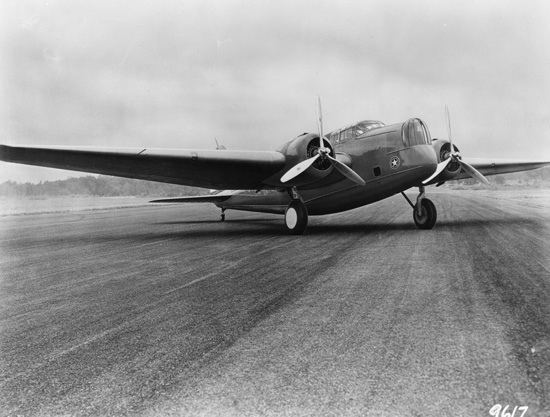Top speed 377 km/h Wingspan 23 m Cruise speed 328 km/h First flight 1932 | Range 1,991 km Length 16 m | |
 | ||
The Martin Model 146 was an unsuccessful American bomber design that lost to the Boeing Model 299, the prototype of the famous B-17 Flying Fortress.
Contents
Design and development
Although generally satisfied with the speed and bombload of the Martin B-10, the United States Army Air Corps expressed a requirement for a bomber with long range. Two competitions were held in 1934-35: one for fast bombers capable of flying 2,200 miles (3,500 km), and a second for the experimental prototype of a 5,000-mile (8,000 km) bomber.
The Martin 146 was built for the first competition, competing with the Boeing Model 299 (later the B-17) and Douglas DB-1 (later the B-18). Two versions were submitted for the competition, the Model 146 (actual aircraft) and the Model 146A (design only). The only significance between the two was the planform, the 146 center section was rectangular with the outer wing being tapered while the 146A had a constant taper.
The Model 146 bore a striking resemblance to the earlier Martin B-10, with the same configurations of turret and cockpits and even the same two Wright Cyclone engines – "hardly positive selling points for a customer looking for the latest technology". The biggest differences between this aircraft and the Martin 139 (B-10) was that it was wider, allowing the pilot and co-pilot to sit side by side and was equipped with Fowler flaps, the first large aircraft equipped with them.
The Model 146 was not successful but it led the Martin company to begin research into contemporary aviation technology. Some offshoots included the innovative Martin 145 proposed for the long-range bomber competition as well as the early studies that would lead to the Model 179 (later to emerge as the wartime Martin B-26). The aircraft was eventually returned to the factory and scrapped.
Specifications (Model 146)
General characteristics
Performance
Armament
